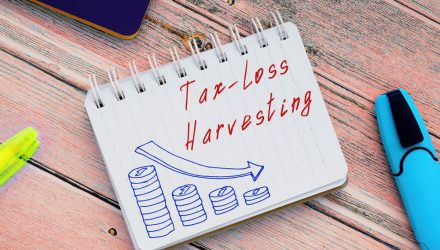Have you revisited tax loss harvesting in your portfolio for the end of 2023? With Halloween behind us and the year coming to an end, it’s time to dive back in. Specifically, investors and advisors may want to look at why an active approach to tax loss harvesting matters. ETFs bring notable strengths that may help advisors and their clients get the most out of the tax mitigation strategy.
See more: “These Sectors Are Standing Out For H2 2023”
As a refresher, tax loss harvesting involves selling securities in a timely manner at a loss, but doing so in a way that offsets gains elsewhere in a portfolio. That allows a portfolio to move off of a disappointing investment and reinvest somewhere more appealing. At the same time, this reduces a portfolio’s tax consequences.
Investors should keep in mind the wash sale rule. It prevents reinvesting tax loss proceeds in “substantially identical” stocks or securities. This could apply to a single stock or similar ETF strategies. For example, if an investor or advisor sells a cloud computing-focused tech stock, they cannot reinvest in the same stock. The same logic would apply to selling an index-based ETF and reinvesting into a different ETF that tracks the same exact index. Some investors may see this as an opportunity to reposition the portfolio for future opportunities.
Those factors speak to the importance of an active strategy for harvesting tax losses. Investors and advisors should closely watch when and how to move in and out of a stock or ETF. Per research from Fidelity, since 2009, the S&P 500 has seen a max intra-year decline of around 10% six times, yet still finished with positive annual total returns, suggesting that timing the S&P 500 matters.
ETFs can play a strong role in tax loss harvesting. The ETF wrapper has inherent tax advantages compared, for example, to mutual funds. For example, ETFs see fewer “taxable events” than mutual funds. Active ETFs, particularly, can also see potential tax benefits when their managers take steps to mitigate the ETF’s tax bill by tax loss harvesting the stocks within the fund itself.
For more news, information, and strategy, visit the ETF Investing Channel.
Fidelity Investments® is an independent company, unaffiliated with VettaFi. There is no form of legal partnership, agency affiliation, or similar relationship between VettaFi and Fidelity Investments, nor is such a relationship created or implied by the information herein. Fidelity Investments has not been involved with the preparation of the content supplied by VettaFi and does not guarantee, or assume any responsibility for, its content.
1115571.1.0

